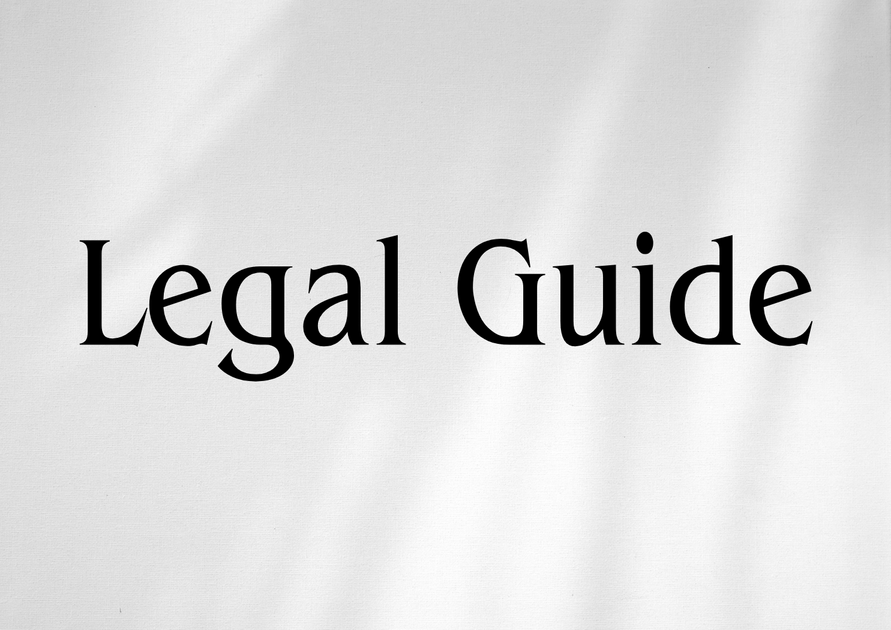Introduction: Navigating Loan Default Legal Remedies in Saudi Arabia and the Wider GCC
Financial transactions underpin the economic environment of Saudi Arabia, with lending and borrowing activities central to both individual and corporate growth strategies. However, as economic volatility continues, so does the risk of loan defaults, compelling lenders and borrowers alike to understand the legal landscape surrounding credit defaults and their remedies. For UAE-based businesses, executives, and legal practitioners, awareness of Saudi Arabia’s evolving approach—fostered by recent legal updates—has become indispensable. This expertise is vital, not only for cross-border operations but also to ensure proactive risk management, influence contract structuring, and inform dispute resolution strategies. The following article provides an expert, consultancy-grade analysis of the principal legal remedies for loan defaults in Saudi Arabia, comparing them with UAE laws, and drawing actionable recommendations to empower organizations to mitigate risks and ensure compliance in 2025 and beyond.
Why This Matters to UAE Stakeholders:
- Saudi Arabia’s financial regulations, especially following Vision 2030 and associated legal reforms, are increasingly influential in shaping the wider GCC region’s legal ecosystem.
- Cross-border investments, syndicated lending, and trade frequently expose UAE businesses to Saudi-based counterparties.
- Recent legal reforms in both the UAE and Saudi Arabia have shifted the risk, enforcement, and compliance landscape for loan structuring, necessitating awareness and adaptation by HR managers, in-house counsel, and executives.
Table of Contents
- Legal Framework Governing Loan Defaults in Saudi Arabia
- Core Legal Remedies for Loan Defaults
- Judicial Process and Enforcement of Remedies
- Recent Legal Updates and Comparative GCC Insights
- Case Studies and Practical Scenarios
- Risks of Non-Compliance and Best-Practice Strategies
- Future Outlook and Actionable Recommendations
Legal Framework Governing Loan Defaults in Saudi Arabia
Regulatory Overview
The Kingdom of Saudi Arabia’s approach to loan defaults is grounded in Islamic Shari’a principles and detailed in various statutes, most notably the Commercial Courts Law (Royal Decree No. M/93 of 2020), the Bankruptcy Law (Royal Decree M/50 of 2018), and Enforcement Law (Royal Decree No. M/53 of 2012) and its amendments. The Saudi Central Bank (SAMA) regulates financial institutions, while the Ministry of Justice oversees enforcement processes through specialized commercial and enforcement courts. Contract law principles derived from Shari’a, emphasizing good faith and fairness, underlie all lending and recovery proceedings.
Key Governing Authorities
- Saudi Central Bank (SAMA)
- Ministry of Justice
- Commercial Courts
- Enforcement Courts
- Ministry of Commerce
Sources of Law
- Commercial Courts Law (Royal Decree No. M/93/1441H)
- Bankruptcy Law (Royal Decree No. M/50/1439H and implementing regulations)
- Enforcement Law (Royal Decree No. M/53/1433H and subsequent updates)
- Central Bank regulations and circulars
- General Shari’a principles as interpreted in commercial contexts
Comparison Table: Core Loan Default Laws in KSA and UAE
| Aspect | Saudi Arabia | UAE |
|---|---|---|
| Governing Law | Commercial Courts Law, Enforcement Law, Shari’a | Federal Decree Law No. 14 of 2020 on Bankruptcy, UAE Civil Transactions Law |
| Specialized Courts | Commercial Courts, Enforcement Courts | Commercial Courts, Bankruptcy Courts |
| Regulatory Authority | SAMA, Ministry of Justice | Central Bank of UAE, Ministry of Justice |
| Bankruptcy Proceedings | Reorganization and liquidation available, debtor-in-possession model | Preventive composition, Restructuring, Liquidation |
| Basis for Contract Interpretation | Shari’a, recent statutory reforms | Civil law with Shari’a fallback, explicit codification |
Visual suggestion: Infographic summarizing the major legal authorities and court pathways for loan defaults in Saudi Arabia.
Core Legal Remedies for Loan Defaults
1. Judicial Recovery via Enforcement Courts
The primary route for recovery is obtaining and enforcing a legally recognized debt instrument (such as a notarized loan agreement, promissory note, or enforceable deed). The lender files a claim in Enforcement Court under Enforcement Law Article 9, attaching the enforceable instrument. The court issues an order obliging the debtor to pay within five days, failing which enforcement steps commence, including asset seizure and account freezes.
2. Asset Seizure and Attachment
Once default is established, the Enforcement Court may order:
- Seizure of movable and immovable assets (bank accounts, real estate, vehicles)
- Wage garnishments per court discretion
- Listing the debtor on credit blacklists maintained by SIMAH (Saudi Credit Bureau)
3. Bankruptcy Proceedings and Debt Restructuring
If the indebted party is insolvent, creditors may file a bankruptcy petition under the Bankruptcy Law. The law provides multiple procedures:
- Preventive Settlement: Early intervention to agree on repayment terms and avoid liquidation
- Financial Restructuring: Court-supervised negotiations and reorganization
- Liquidation: Asset distribution to creditors per statutory priority
Notably, borrower protection and corporate rehabilitation are emphasized, but creditor rights remain firmly established through enforceability of court judgments.
4. Out-of-Court Settlements and ADR
The Saudi legal system encourages amicable settlement and mediation, often facilitated by SAMA or court-appointed mediators, especially in banking and finance disputes. Arbitration clauses are generally enforced, provided they adhere to public policy and Shari’a principles.
5. Criminal Charges and Travel Bans
While debt is not typically criminalized, certain conduct (such as fraud or issuance of bad cheques) may result in criminal sanctions. Courts can also impose travel bans and restrictions under specific circumstances, especially if there is a risk of asset flight.
Visual suggestion: Process flow diagram illustrating the stages of legal action following a loan default—from demand to enforcement and bankruptcy.
Judicial Process and Enforcement of Remedies
Steps in the Enforcement Process
- Demand Notice – Lender serves an official notice demanding payment.
- Filing Enforcement Case – Submission of enforceable contract or instrument to Enforcement Court.
- Summary Order – Court issues a payment order, typically within five days.
- Seizure Actions – Court executes asset freezes, salary deductions, property attachment as required.
- Bankruptcy Petition – If assets are insufficient, creditor may trigger bankruptcy proceedings.
- Distribution or Liquidation – Court-supervised asset disposal and settlement.
Evidence and Documentation
The keys to effective enforcement are:
- Possession of a valid, enforceable loan agreement (preferably notarized)
- Clear evidence of default (e.g., unpaid instalments, missed deadlines)
- All correspondence evidencing demand and default
- Updated power of attorney and authority documentation, especially for corporate creditors
Timeframes and Practical Challenges
Procedures have been expedited significantly following the digitization of Saudi commercial courts. Nonetheless, delays may arise in complex or cross-border cases—especially involving asset tracing, third-party collateral, or contested bankruptcy. Legal counsel should anticipate these risks and prepare thorough documentation to minimize judicial friction.
Recent Legal Updates and Comparative GCC Insights
1. Digitization and Commercial Court Reforms
The 2020 Commercial Courts Law and ongoing e-government initiatives have streamlined filing, case management, and enforcement procedures. Online platforms now allow for faster submission, notification, and order issuance—curtailing historic delays and improving creditor recoveries.
2. Bankruptcy Law Evolution
Recent amendments have clarified the ranking of creditors and provided clearer tools for corporate reorganization, balancing debtor rehabilitation with creditor protection. The 2020/2021 amendments also increased regulatory supervision and enhanced protections for minority creditors.
Comparative Table: Old vs. New Enforcement Law Provisions
| Provision | Pre-2020 Regime | Post-2020 Regime (Current) |
|---|---|---|
| Digital Filing | Paper-based, manual | Fully online, automated notifications |
| Payment Order Timelines | Up to 30 days | 5 days for summary order |
| Scope of Asset Attachment | Limited procedural reach | Wider, more robust asset tracing & seizure |
| Bankruptcy Reorganization | Unclear, ad hoc | Structured reorganization, court supervision |
Insights for UAE Stakeholders
- Alignment: Both Saudi Arabia and the UAE have modernized court processes and adopted a more holistic approach to debtor-creditor relations.
- Differences: Enforcement courts in Saudi Arabia tend to operate on Shari’a-based principles, while UAE relies more on codified civil law for contract enforcement.
- Cross-Border Impact: Saudi reforms increase predictability for UAE lenders with KSA exposure but require careful contract drafting and due diligence.
Visual Suggestion:
Chart comparing timelines and success rates for debt recovery in KSA and UAE before and after recent legal reforms.
Case Studies and Practical Scenarios
Case Study 1: Corporate Syndicated Loan Default
A UAE-headquartered trading company, with a Saudi subsidiary, defaults on a syndicated facility governed by Saudi law. The consortium of lenders issues a default notice, but the local subsidiary disputes the calculations. Enforcement action is filed with Riyadh Enforcement Court, backed by notarized loan documents.
- The Saudi court issues an interim payment order and freezes subsidiary accounts.
- The company seeks bankruptcy protection, triggering a court-supervised restructuring.
- UAE-based stakeholders must coordinate via legal counsel to assert claims and protect collateral, navigating Saudi and UAE insolvency frameworks in tandem.
Case Study 2: Individual Loan Default and Travel Ban
An expatriate executive working in Saudi Arabia defaults on a personal loan. The bank files an Enforcement Court case, leading to asset freezes, wage garnishment, and imposition of a travel ban. The individual negotiates a settlement via court-approved mediation, allowing restricted travel in exchange for partial repayment.
Hypothetical: Cross-Border Guarantee Enforcement
A UAE lender holds a Saudi guarantor’s pledge for a loan defaulting in Dubai. To enforce the guarantee, it must initiate proceedings in Saudi Enforcement Court—highlighting the importance of cross-jurisdictional due diligence and structured documentation reflecting both UAE and KSA legal requirements.
Compliance Checklist Table: Avoiding Pitfalls in Saudi Loan Defaults
| Checklist Item | Action Required |
|---|---|
| Enforceable Documentation | Ensure contracts are notarized and compliant with Saudi law |
| Choice of Law & Venue | Specify jurisdiction and dispute resolution mechanism clearly |
| Asset Search | Map borrower’s assets across GCC before lending |
| Ongoing Monitoring | Leverage SIMAH reports, periodic financial reviews |
| Legal Partnership | Engage with counsel experienced in Saudi enforcement law |
Risks of Non-Compliance and Best-Practice Strategies
Risks of Non-Compliance
- Asset Recovery Delays: Failing to document loans per statutory form may render enforcement impossible or slow.
- Exposure to Criminal Sanctions: Fraudulent misrepresentation or issuance of bounced cheques can trigger criminal penalties.
- Cross-Border Conflicts: Divergent legal standards between UAE and Saudi Arabia may frustrate creditors’ ability to realize security or enforce judgments.
- Reputation and Blacklisting: Non-compliance can lead to regulatory scrutiny, inclusion on SIMAH blacklists, and severe reputational damage.
Compliance Strategies for Organizations
- Due Diligence: Systematically review borrower’s financial disclosures, collateral, and guarantee structures across jurisdictions.
- Contractual Precision: Utilize robust, Shari’a-compliant loan agreements and security documents, with clear recourse, governing law, and venue stipulations.
- Documentation: Maintain notarized copies and consolidate all evidence of loan performance and communications.
- Dispute Resolution Planning: Consider pre-dispute mediation clauses, arbitration agreements, and enforceability under both UAE and KSA laws.
- Proactive Monitoring: Employ credit bureau surveillance (SIMAH, Al Etihad Credit Bureau), regular audits, and continuous borrower engagement.
- Legal Counsel Engagement: Involve expert counsel specializing in both Saudi and UAE systems from structuring through enforcement stages.
Future Outlook and Actionable Recommendations
The Path Ahead for UAE and Saudi Business Stakeholders
Saudi Arabia’s legal system is evolving rapidly to meet the demands of a globalized financial sector, emphasizing streamlined enforcement, corporate rehabilitation, and creditor protection. For UAE-based organizations and regional legal practitioners, staying current with these developments is imperative to safeguarding investments, designing resilient contracts, and preparing for efficient cross-border dispute resolution.
- Ongoing Legal Updates: Both Saudi Arabia and the UAE continue to update insolvency and enforcement laws. Firms should monitor official publications from the UAE Ministry of Justice and Saudi Ministry of Justice.
- Documentation is Critical: A single document’s non-compliance can undermine years of risk management. Notarization and legal review should be standard procedure for all cross-border financing agreements.
- Leverage Professional Support: The complexity of GCC financial law requires tailored advice—engage reputable legal consultants with proven Saudi and UAE expertise to minimize surprises and delays.
- Be Proactive, Not Reactive: Establish early warning systems, standardized compliance checklists, and periodic contract audits to pre-empt default risks.
Best Practices for Proactive Legal Compliance
- Establish direct relationships with regional credit bureaus (SIMAH, AECB).
- Standardize loan templates to reflect Saudi legal requirements and Shari’a principles.
- Train legal, credit, and HR teams on cross-border enforcement protocols.
- Integrate dispute resolution and asset tracing processes with digital court systems in KSA and UAE.
- Schedule annual policy reviews incorporating updates from the UAE Federal Legal Gazette and Saudi commercial law reforms.
Conclusion: Shaping Legal and Commercial Resilience Across the GCC
The convergence of legal innovation, digitization, and regulatory harmonization in Saudi Arabia offers unprecedented opportunities for efficient credit risk management. However, this landscape also presents new compliance challenges and expectations—demanding that UAE businesses, lawyers, and financial institutions remain vigilant, adaptive, and strategically positioned. By leveraging a nuanced understanding of both Saudi and UAE legal frameworks, organizations can mitigate loan default risks, expedite recoveries, and futureproof their commercial interests in an era of continuous legal evolution.
For tailored guidance, in-depth contract review, and representation in Saudi or UAE courts, consulting with a seasoned regional legal advisory firm remains the cornerstone of responsible and strategic business practice.




